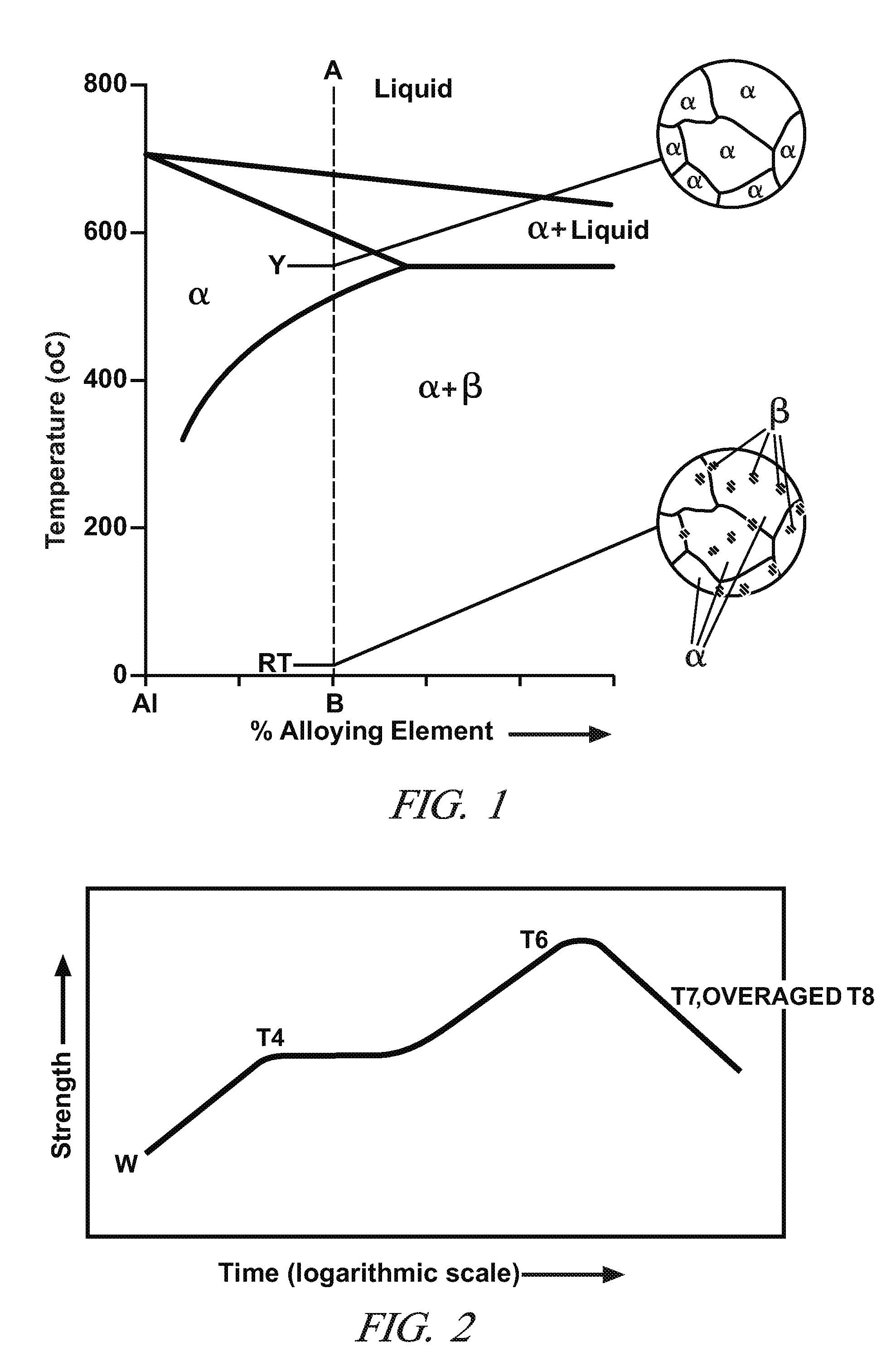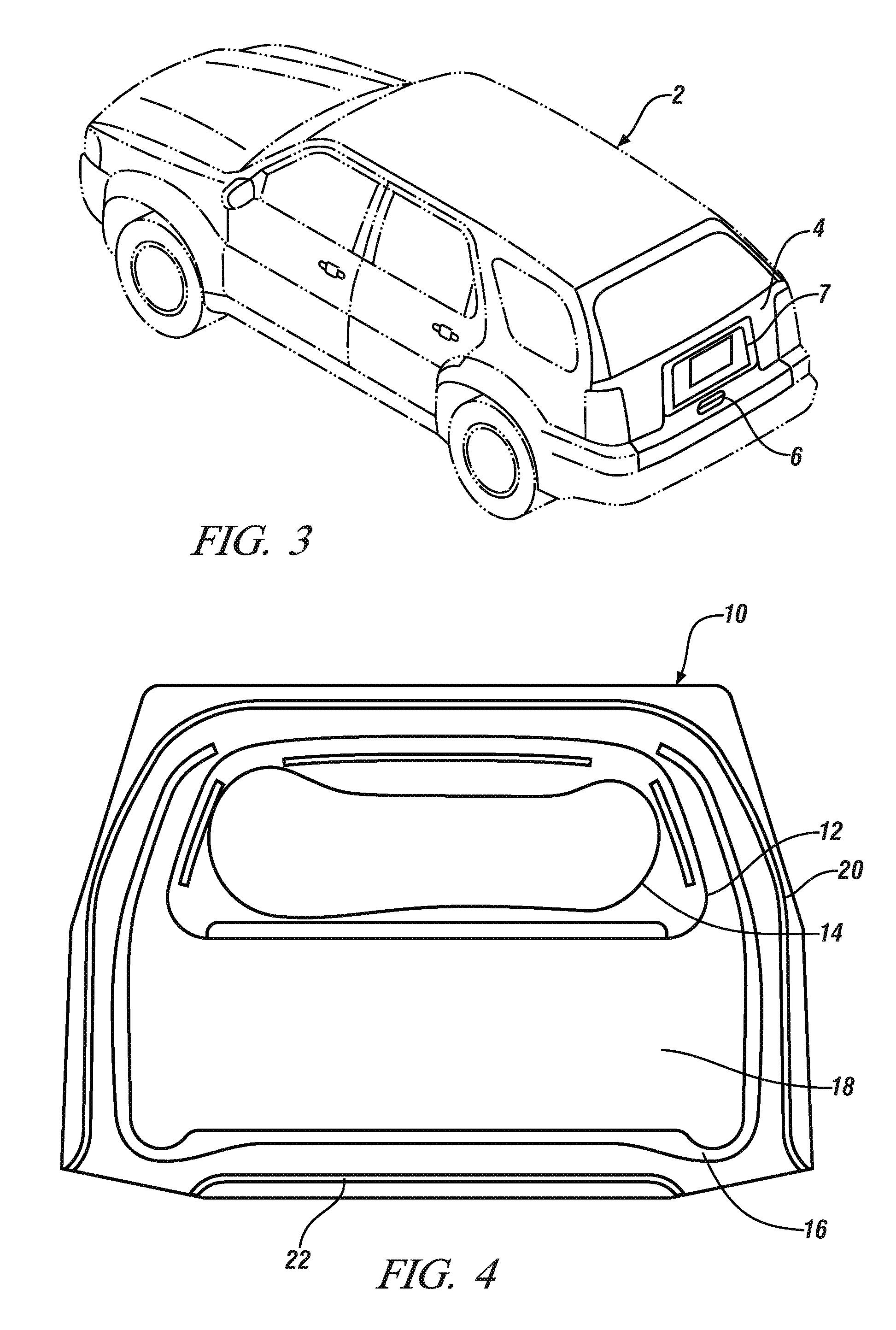Stamping of age-hardenable aluminum alloy sheets
- Summary
- Abstract
- Description
- Claims
- Application Information
AI Technical Summary
Benefits of technology
Problems solved by technology
Method used
Image
Examples
example 1
[0063]A 6xxx series overaged aluminum sheet (e.g. 6014) in an overaged T8 temper may be prepared by practice of the thermal treatment 40 shown in FIG. 6 and comprising:
[0064]a solution treatment 42, conducted at a temperature of about 535° C. for about one hour followed by quenching into water at room temperature or about 25° C.;
[0065]a pre-strain or deformation step 44, performed at about room temperature, which could be practiced by tension or roller leveling the sheet or by a light roller pass imparting about 5% thickness strain to the sheet;
[0066]a first aging step 46, comprising exposing the sheet to a temperature of about 175° C. for about 6 hours; and
[0067]an overaging step 48, comprising exposing the sheet to about 250° C. for about 8 hours.
[0068]This process will promote the microstructure schematically shown at 50 where coarse precipitates 54 are formed substantially within aluminum grains 52.
example 2
[0069]A 6xxx series overaged aluminum sheet (e.g. 6014) in a commercial T7 temper may be prepared by practice of the thermal treatment 60 shown in FIG. 7 and comprising:
[0070]a solution treatment 62, conducted at a temperature of about 535° C. for about one hour followed by quenching into water at room temperature or about 25° C.; and
[0071]an overaging step 64, comprising exposing the sheet to about 175° C. for about 12 hours
[0072]This process will promote the microstructure schematically shown at 70 where coarse precipitates 72 are formed substantially within aluminum grains 73 in combination with large precipitates 74 formed on aluminum grain boundaries 76.
example 3
[0073]A 6xxx series overaged aluminum sheet (e.g. 6014) in a commercial T7 temper may be prepared by practice of the thermal treatment 80 shown in FIG. 8 and comprising:
[0074]a solution treatment 82, conducted at a temperature of about 535° C. for about one hour followed by quenching into water at room temperature or about 25° C.; and
[0075]an overaging step 84, comprising exposing the sheet to about 250° C. for about 12 hours.
[0076]This process will promote the microstructure schematically shown at 90 where coarse precipitates 92 are formed substantially within aluminum grains 93 in combination with large precipitates 94 formed on aluminum grain boundaries 96.
[0077]It may be noted that the precipitates, both grain boundary 96 and intergranular 92 are coarser than those formed at the lower overaging temperature of Example 2. It will be appreciated also, that after each of solutionizing treatments 42, 62, 82, some room temperature aging may occur depending on how long the sample is ma...
PUM
| Property | Measurement | Unit |
|---|---|---|
| Temperature | aaaaa | aaaaa |
| Temperature | aaaaa | aaaaa |
| Fraction | aaaaa | aaaaa |
Abstract
Description
Claims
Application Information
 Login to View More
Login to View More - R&D
- Intellectual Property
- Life Sciences
- Materials
- Tech Scout
- Unparalleled Data Quality
- Higher Quality Content
- 60% Fewer Hallucinations
Browse by: Latest US Patents, China's latest patents, Technical Efficacy Thesaurus, Application Domain, Technology Topic, Popular Technical Reports.
© 2025 PatSnap. All rights reserved.Legal|Privacy policy|Modern Slavery Act Transparency Statement|Sitemap|About US| Contact US: help@patsnap.com



